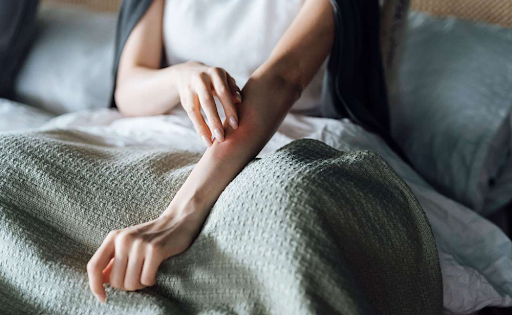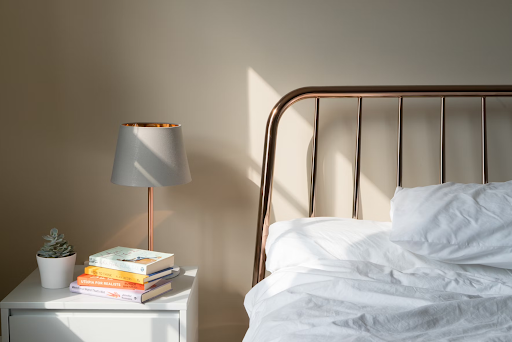What are bed bugs and how can you reduce risk of infestation?

Author: Jonathan Warren

Bed bugs are bad news – end of story! These little creatures of the night can wreak havoc on your quality of sleep if they've chosen your bedroom to set up camp. But whilst the mere mention of these mites are likely to strike fear into hearts everywhere, what even are bed bugs? What do they look like? And most importantly, how can you get rid of them?
If you're worried, we've put together all the information you need to know when it comes to watching out for these pesky little bedfellows and what you can do if bed bugs have claimed your mattress as their home.
What are bed bugs?
These small pests hail from the genus ‘Cimex’ that feeds on blood – yuck!
Bed bugs can't fly, but they can move pretty rapidly around any home and quickly get settled into any of your soft furnishings. Beds are often their prime location, hence the name, as they come with guaranteed access to their meal supply (you!) and often provide a dark place to hide.
Unfortunately, bed bugs don't hang around when it comes to reproduction either – a female can lay hundreds of eggs over a lifetime and cause you real issues if you don’t get on top of the problem quickly. Plus, newborn bed bugs, known as nymphs, will shed their skin five times prior to becoming a fully-fledged adult, leaving their discarded shells behind in your bed.
What do bed bugs look like?
Bed bugs have a distinctive reddish-brown colour and an adult will look flat and oval-shaped, much like the shape of a head louse.
Newborn bugs are about the size of a small seed and adults grow to about a quarter of an inch. But no matter how small any bed bug is, they are all visible once you know when and where to look!
How to check for bed bugs?
Whilst it might seem impossible to catch these pesky critters in the act as they come and go while you sleep, there are several tell-tale signs that you might not be sleeping alone.
The first indicator is bites. Bed bugs exist to feed on blood and that comes with leaving marks on any area of your skin that’s exposed when you drift off to the land of nod, including your face, hands or arms. Often appearing in a line or a small cluster, bed bug bites are irritating and itchy but luckily do not cause more serious health issues.
Bite marks can be difficult to pin solely on bed bugs however – a few insect bites could also be the work of any nearby gnats or midges – so if you notice that you've been bitten, it’s time to check your house! As these critters are more likely to strike in the night, your bedroom and mattress are the best places to start your search.
You'll need to look for blood stains on your bedding or mattress where you may have been bitten or you might have squished any bugs in your sleep. You should also look out for any signs of bed bug excrement which is likely to look like little spots of rust and you might also spot light-brown shedded skin which the babies have left behind.
Getting even closer, if it looks like there are tiny white grains of rice in your bed, bedding, or anywhere else in your room, these could be bed bug eggs. Whilst your mattress and bedding are the go-to places on any search for suspected mites, they can easily set up camp in bed frames, bedside tables, clothes, curtains or carpet edges, too.
Steps to removing bed bugs
1. Identify where the bed bugs are
This will require an in-depth search of your bedroom with a torch and magnifying glass, far beyond the limits of your bed. Starting with the main area for activity, make sure your bed is as clean as it can be. We've already put together everything you need to know about mattress cleaning in our How to Clean Your Mattress blog and if bed bugs are in the mix, just be sure to thoroughly inspect your mattress and vacuum in all the crevices to catch any lurking pests. Using a stiff brush to scrub your mattress before vacuuming could help to remove them and their eggs, too.
Once your mattress has had a good vacuum, keep cleaning around your bed frame and target any corners or cracks on your flooring. You should also consider repairing any cracks in your walls or loose bits of wallpaper, checking in furniture joints and electrical outlets, decluttering your bedside tables and keeping your bedroom space as clear as possible. This will give them fewer places to hide! And whilst it's not really possible to fully prevent bed bugs, checking your pets regularly, assessing any hotel beds and being wary of second hand furniture can help give you the upper hand.
2. Contain the infestation
If you’ve found a bed bug and are sure you have an infestation, it’s time to contain them so you can exterminate them – and quickly. The best first course of action is to get hoovering around any and every possible hiding place, from your bed to any storage furniture, carpets, curtains and electronic devices. Be thorough!
Once you have hoovered everywhere, seal your vacuum bag tightly and throw it away immediately before giving your hoover a seriously deep clean.
If you have any furniture that cannot be cleaned, you need to dispose of it safely. Break it up and label the discarded furniture clearly with “bed bugs” to ensure no-one else picks up the affected piece in the future.
It’s then crucial that you bag, seal and wash all of your soft furnishings before washing them on their highest possible temperature setting in your washer dryer without damaging them. If the care label of a particular item dictates that it cannot be washed, put the item in your tumble dryer for at least 30 minutes on its highest heat setting.
3. Prepare to treat the bed bugs
Fail to prepare, prepare to fail. To give yourself the best possible chance of getting rid of bed bugs for good, you need to prep your space thoroughly before treating it. After removing, cleaning or discarding all your soft furnishings, clothes, carpets etc, it’s time to completely declutter the infested room to minimise any hiding places.
Pick up any clothes, shoes, book and other stray items from your floors and tabletops, throwing out anything you don’t need in sealed bags. Be sure not to move any of the items out of the room into a clean space as it will further spread the bed bugs about your home and cause you a whole world of pain!
As mentioned in the first step, identify and seal up any open areas where the bed bugs could seek refuge. Tape up your electrical outlets, fix any cracks in your furniture, seal gaps in your baseboards and glue down any loose wallpaper or floorboards.
4. Kill the bed bugs
Now you’ve prepped your space, the time has come to remove the bed bugs permanently. The best way to do this is to expose the bugs to either intense heat (over 46°C) or intense cold (0°C).
Heat Methods
When washing and drying, use 30 minute cycles at the hottest possible temperature settings. Use a steamer on soft furnishings where the bugs could be hiding. Any tightly sealed bags of infesting clothing and other items can be left outside or in a car where temperatures are 35°C or above. When the weather is cooler, you can do the same but need to be aware that it can take anywhere from two to six months to kill bed bugs in sealed plastic bags.
Cold Methods
Rather than putting sealed up bags outside or in hot environments, you can also freeze them. In order for this to work, you need to be sure your freezer is able to reach extreme lows of up to -18°C – you can use a temperature gun or thermometer to check this. Once in the freezer, it is imperative you leave these infested sealed bags in there for at least four days.
5. Futureproof your space
When you can’t see any bed bugs with the naked eye, use bed bug-proof covers over your mattress and bed frame. Zip them up and secure them tightly so any remaining bugs will die and no new bugs can make their way inside.
Set up a schedule to check for any further signs of bed bug activity – a seven day cycle should do the trick. Sticky bed bug tape and traps can help with this as they are easily placed under bed legs and other furniture bases, making the little pests much easier to spot and literally stopping them in their tracks before they can climb up onto your furniture.
If you do spot further activity and are at a loss about how to rid yourself of bed bugs, you may need to turn to using insecticides and other harsher treatments before calling in the professionals.
Are there chemical bed bug treatments that you can use safely in the home?
There are, yes. Just be vigilant that you’re choosing the correct ones!
If non-chemical methods aren’t cutting the mustard, insecticide chemical dusts may help. These include common bed bug removing chemicals such as pyrethrins and pyrethroids. While other insecticides can be rather harmful, these two pose low levels of toxicity to pets and people, work quickly and provide ongoing protection from bed bugs.
If you do opt for these chemicals, be careful to read the instructions closely so that you can deploy them efficiently and in the safest manner possible.
When should you call in the professionals?
If you’ve exhausted every effort on your own, there’s no shame in calling in the pros – in fact, it’s smart to! There are experts out there who are masters at sorting out bed bug issues in even the cleanest homes and bedrooms, as they have access to and knowledge of much harsher chemicals and treatments unavailable to the general public.
If you know you have bed bugs, don't let them interfere with your quality of sleep and consult the professionals to make sure they are gone for good!



